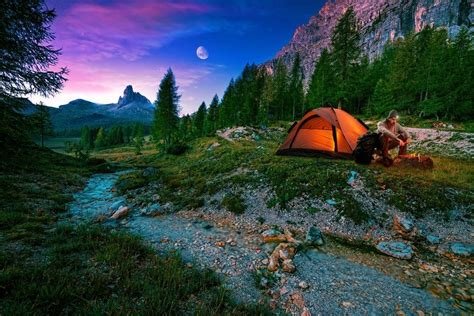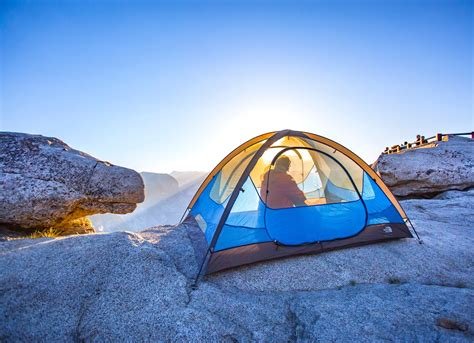The Art of Backcountry Camping: Tips for a Remote Wilderness Experience
Are you ready to escape the hustle and bustle of everyday life and immerse yourself in the serene beauty of the remote wilderness? Backcountry camping offers a unique opportunity to connect with nature on a deeper level, but it also requires careful planning and preparation to ensure a safe and enjoyable experience. In this blog post, we’ll explore the art of backcountry camping, sharing tips and tricks for choosing the perfect camping location, selecting essential gear and equipment, and planning and preparing for a successful trip. We’ll also discuss the importance of navigation and safety in the wilderness, as well as the ethical considerations of leaving no trace. And of course, we won’t forget to cover delicious and nutritious meal ideas to keep you energized and satisfied during your backcountry adventure. So, whether you’re a seasoned outdoor enthusiast or a novice camper, we’ve got you covered with all the information you need for a memorable and fulfilling backcountry camping experience.
Choosing the Perfect Backcountry Camping Location
When it comes to backcountry camping, one of the most crucial decisions you will make is choosing the perfect location. The right camping spot can make or break your trip, so it’s important to carefully consider the factors that will contribute to a successful and enjoyable experience.
First and foremost, location is key. Consider the type of wilderness environment you want to camp in. Are you drawn to the peace and quiet of a secluded forest, or do you prefer the open skies and expansive views of a mountainous terrain? Different locations offer different experiences, so it’s important to choose one that aligns with your personal preferences and outdoor goals.
Additionally, take note of the terrain and topography of your chosen location. Will you need to hike long distances to reach your campsite, or is it easily accessible by car? Consider the physical demands of the terrain and whether it aligns with your fitness and outdoor skills. It’s important to choose a location that offers an appropriate level of challenge while still ensuring safety and enjoyment.
Lastly, think about the environmental impact of your chosen camping location. Are there any restrictions or regulations in place that might affect your camping experience? It’s important to choose a location where you can practice responsible backcountry ethics and minimize your environmental footprint. By taking the time to consider these factors, you can ensure that you choose the perfect backcountry camping location for an unforgettable outdoor adventure.
Essential Gear and Equipment for Remote Wilderness Camping
When venturing into the remote wilderness for a camping trip, it is crucial to be well-prepared with the essential gear and equipment to ensure a safe and enjoyable experience. One of the most important items to have is a durable and reliable tent that can withstand the elements. Look for a lightweight model that is easy to set up and provides adequate protection from rain, wind, and insects.
Another essential piece of equipment is a high-quality sleeping bag that is suitable for the temperatures you expect to encounter. A warm and comfortable sleeping bag is essential for a good night’s rest in the backcountry. Additionally, a sleeping pad can provide insulation from the cold ground and add an extra layer of comfort.
Navigation tools are also crucial for remote wilderness camping. A detailed topographic map of the area and a reliable compass are essential for navigating unfamiliar terrain. It’s also a good idea to have a GPS device as a backup, but it’s important to remember that batteries can die, so traditional map and compass skills are invaluable.
Other important gear includes a reliable backpack that is comfortable to wear for long periods, a sturdy pair of hiking boots, a portable water filter or purification tablets, and a basic first aid kit. It’s important to pack light, but also to be prepared for emergencies and unexpected situations.
Planning and Preparing for a Successful Backcountry Trip
When planning for a successful backcountry trip, it’s essential to consider all the necessary factors that will contribute to a safe and enjoyable experience. First and foremost, research the area you will be visiting, including the local weather patterns, wildlife, and any potential hazards. This will help you prepare for any challenges that may arise during your trip.
Next, create a detailed itinerary that outlines your route, planned campsites, and estimated travel times. This will not only help you stay on track during your trip, but it will also provide crucial information for emergency responders in the event that something goes wrong.
Additionally, pack appropriately for the unique demands of backcountry travel. This includes lightweight, high-quality gear and equipment such as a reliable tent, sleeping bag, stove, and water purification system. Don’t forget essentials such as a first aid kit, navigation tools, and extra food and water in case of unexpected delays.
Lastly, inform others of your plans before heading out. Let friends or family know your intended route, expected return date, and whom to contact if they don’t hear from you. This simple step can make all the difference in the event of an emergency.
Navigating in the Wilderness: Map Reading and GPS Tips
When venturing into the backcountry, having the skills to navigate through the wilderness is essential for a safe and successful trip. One of the most important tools for navigation is a map, which provides a detailed overview of the terrain, landmarks, and potential hazards in the area. Before heading out, it’s crucial to familiarize yourself with the map and understand how to interpret the various symbols and contour lines to plan your route.
Another valuable tool for navigation in the wilderness is a GPS device, which uses satellite signals to determine your precise location. While a map is still a crucial backup, a GPS can provide real-time tracking, waypoints, and other useful features to help you stay on course. However, it’s important to have a solid understanding of how to operate and navigate using a GPS before relying solely on it.
One key tip for using both a map and GPS is to regularly check your position and compare it with the terrain around you. This will help you confirm your location and make any necessary adjustments to your planned route. Additionally, it’s important to mark key landmarks or waypoints on your map or GPS to aid in navigation and help prevent getting lost.
Lastly, it’s critical to have a basic understanding of orienteering and using a compass in case your electronic devices fail. Mastering the art of map reading and GPS navigation takes practice, but these essential skills can greatly enhance your backcountry experience and ensure you reach your destination safely.
Safety Considerations in Remote Camping
When planning a remote camping trip, safety should be the top priority. It’s important to be prepared for any potential dangers that may arise in the wilderness.
One of the most essential safety considerations in remote camping is to be aware of wildlife in the area. This means properly storing food and disposing of waste to avoid attracting animals to your campsite. It’s also important to know how to safely interact with wildlife if you do encounter them.
Another important safety consideration is to be prepared for medical emergencies. This includes bringing a well-stocked first aid kit and knowing basic first aid skills. It’s also important to have a plan for communication in case of an emergency, whether that means bringing a satellite phone or a personal locator beacon.
Lastly, it’s crucial to be aware of the weather conditions in the area you’ll be camping. In remote locations, storms can be unpredictable and severe. Being prepared for extreme weather is essential for staying safe in the backcountry.
Leave No Trace: Practicing Responsible Backcountry Ethics
When venturing into the backcountry, it is essential to prioritize responsible and ethical practices to preserve the environment and minimize human impact. Practicing Leave No Trace principles is crucial for maintaining the integrity of the wilderness and ensuring future generations can continue to enjoy these natural spaces.
One of the core principles of Leave No Trace is to properly dispose of waste. This means carrying out all trash, including food scraps, and human waste. It is important to follow designated waste disposal guidelines and pack out everything that is brought into the backcountry. By leaving the environment as you found it, you can minimize the intrusion on the natural landscape.
Another key aspect of practicing responsible backcountry ethics is to minimize the impact on wildlife and vegetation. This involves staying on designated trails, avoiding trampling vegetation, and refraining from feeding or approaching wildlife. By respecting the natural habitat, you can help maintain the delicate balance of the ecosystem.
Additionally, practicing Leave No Trace means being mindful of the noise level and overall behavior in the backcountry. This includes keeping noise to a minimum, respecting other outdoor enthusiasts, and being considerate of the overall wilderness experience for oneself and others. By being conscious of these ethical considerations, you can contribute to the preservation of the backcountry environment.
Delicious and Nutritious Meal Ideas for Backcountry Camping
When planning for a backcountry camping trip, it’s important to consider your meals and snacks. The food you bring should be lightweight, easy to prepare, and packed with nutrients to fuel your adventure. It’s also important to pack food that stays fresh for several days without refrigeration.
One popular meal idea for backcountry camping is dehydrated backpacking meals. These lightweight and compact meals only require boiling water to rehydrate and are available in a variety of flavors. Another option is to prepare your own dehydrated meals at home using a food dehydrator. This allows you to customize the meals to your taste preferences and dietary restrictions.
In addition to dehydrated meals, it’s also a good idea to pack high-energy snacks such as nuts, seeds, dried fruit, and energy bars. These snacks provide a quick energy boost during long hikes and are easy to eat on the go. For breakfast, consider packing instant oatmeal, powdered eggs, or granola for a quick and nutritious meal to start your day.
Lastly, don’t forget to pack a variety of seasoning and condiment packets to add flavor to your meals. These small packets of salt, pepper, hot sauce, and olive oil can make a big difference in turning a simple meal into a delicious and satisfying dining experience in the backcountry. With these meal ideas, you can enjoy delicious and nutritious food while exploring the remote wilderness.
Frequently Asked Questions
What factors should I consider when choosing a backcountry camping location?
When choosing a backcountry camping location, consider factors such as accessibility, terrain, water sources, and potential wildlife encounters.
What essential gear and equipment do I need for remote wilderness camping?
Essential gear and equipment for remote wilderness camping include a sturdy tent, sleeping bag, cookware, navigation tools, first aid kit, and proper clothing for the environment.
How can I plan and prepare for a successful backcountry trip?
To plan and prepare for a successful backcountry trip, research the area, create a detailed itinerary, inform someone of your plans, pack essential supplies, and familiarize yourself with wilderness safety and survival skills.
What are some tips for navigating in the wilderness, including map reading and GPS use?
Tips for navigating in the wilderness include learning how to read a topographic map, using a GPS device as a backup, and practicing basic orienteering skills.
What safety considerations should I keep in mind while camping in remote areas?
Safety considerations in remote camping include being aware of wildlife, weather conditions, potential hazards, and practicing proper food storage to prevent animal encounters.
How can I practice responsible backcountry ethics and leave no trace while camping?
To practice responsible backcountry ethics and leave no trace, follow principles such as packing out all trash, minimizing campfire impacts, and respecting wildlife and natural surroundings.
What are some delicious and nutritious meal ideas for backcountry camping?
Delicious and nutritious meal ideas for backcountry camping include dehydrated meals, trail mix, energy bars, and easy-to-cook options like pasta, rice, and canned goods.






